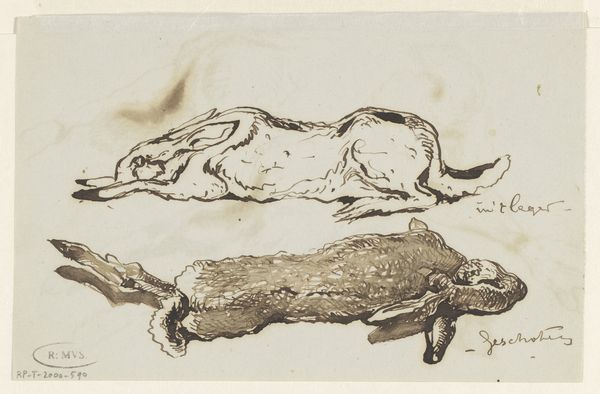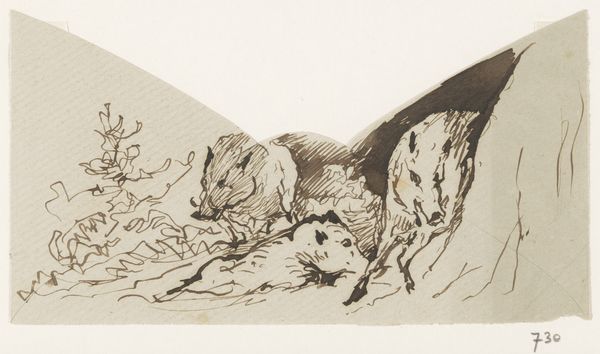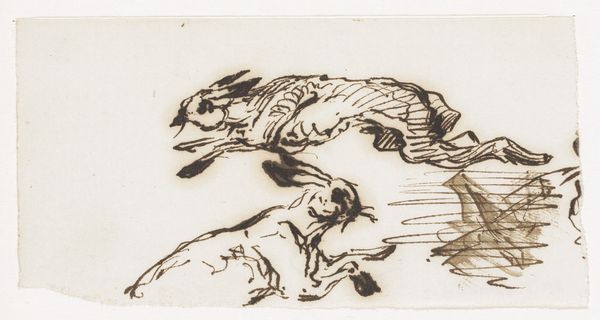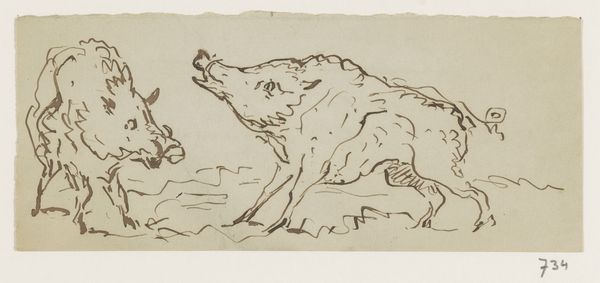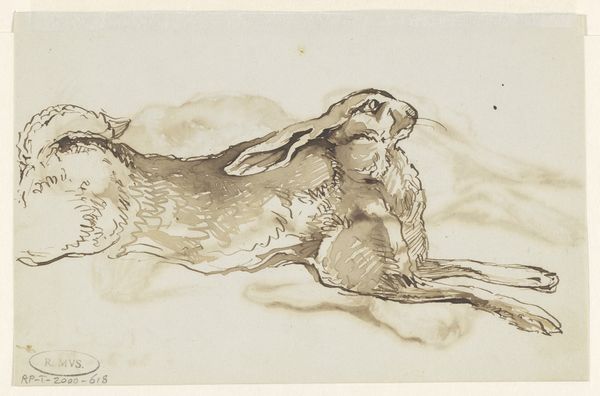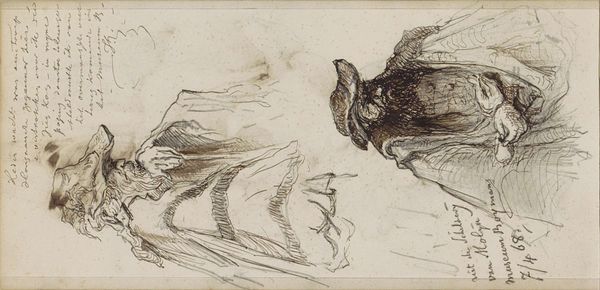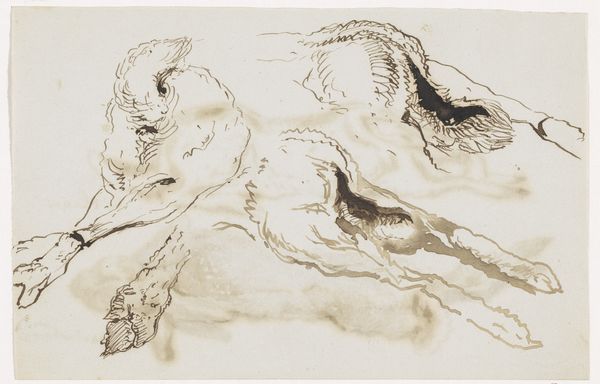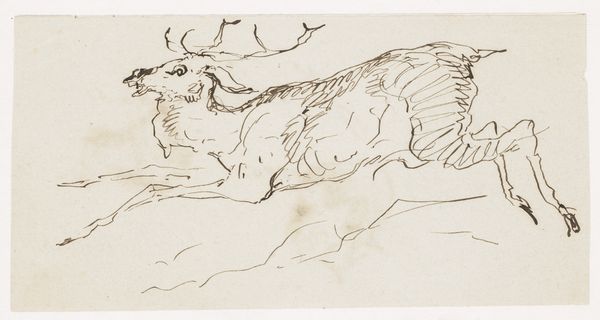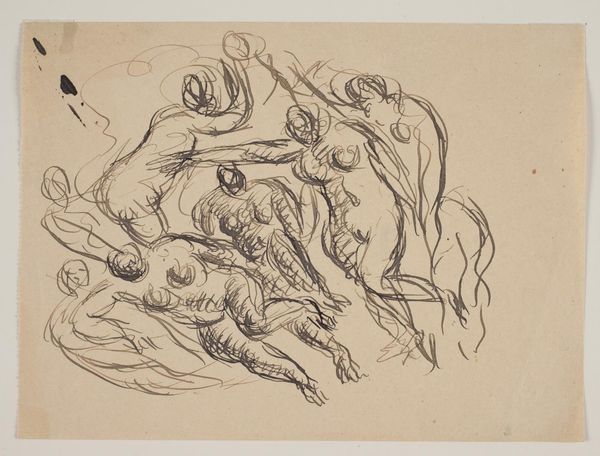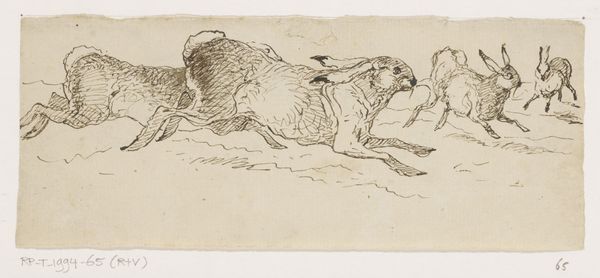
Dimensions: height 56 mm, width 211 mm
Copyright: Rijks Museum: Open Domain
Curator: What strikes me first is the sheer vulnerability captured in this work. There's a tenderness, despite the subject matter, a real attempt to engage with the hare's inherent qualities even in death. Editor: And it's in a particularly Dutch style known for its detailed naturalism. Here we have “Dead Hare” by Johannes Tavenraat, dating from sometime between 1840 and 1880. You can see the delicate work done in ink, watercolour, and pencil on paper. What about the symbolism of the hare interests you here? Curator: Well, hares historically, in various European mythologies, are symbols of both fertility and timidity – representing cycles of life and death. But viewed through the lens of 19th-century Dutch society, where hunting was often associated with social status and masculinity, depicting the dead hare could be read as a commentary on class, power dynamics, and our relationship with the natural world. The work seems to suggest the tension of those ideas rather explicitly. Editor: I think that's astute. Tavenraat has meticulously captured the textures: the softness of the fur against the stark stillness of death. And this poses quite a challenge. Artists are tasked with creating symbolic impact when depicting hunted animals in a sensitive, detailed and naturalist manner. How does it strike your interpretive side? Curator: It strikes me as both elegiac and critical. The artist acknowledges the reality of the hare's death but refuses to sensationalize it. Instead, we’re offered a moment for contemplation. It quietly challenges us to consider the systems, human conventions, or perhaps social constructs that allowed this death to occur. Editor: A rather powerful message within a deceptively simple sketch, isn't it? The hare, a creature of myth, captured so delicately. I see how these layers enrich its visual presence, and the work acts as a constant reminder. Curator: Indeed. By understanding both the symbolic weight and historical setting, we gain a much richer perspective of this work. It challenges us to connect across the divides of culture and time.
Comments
No comments
Be the first to comment and join the conversation on the ultimate creative platform.
